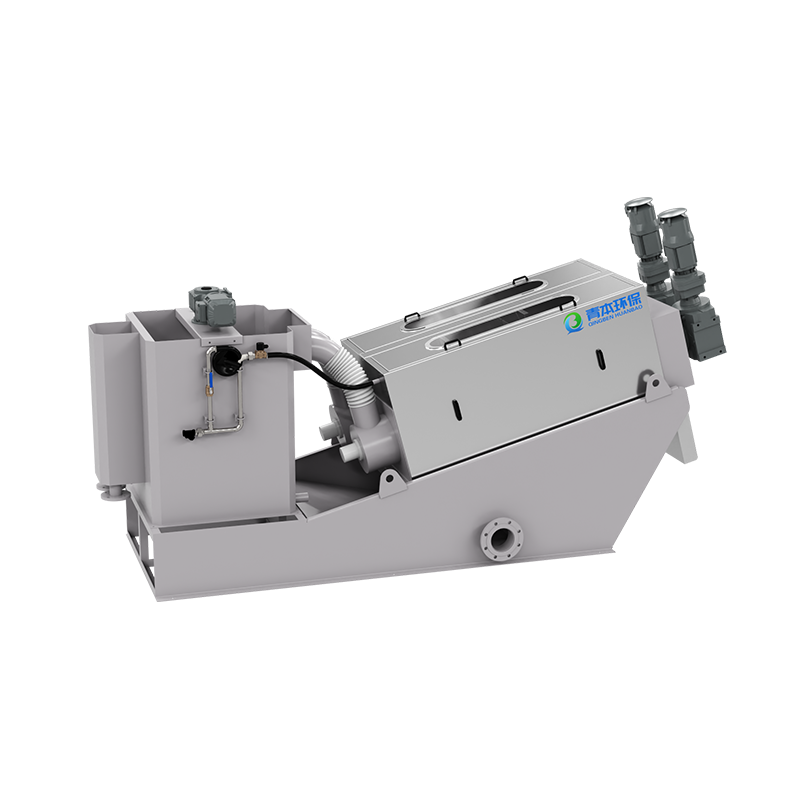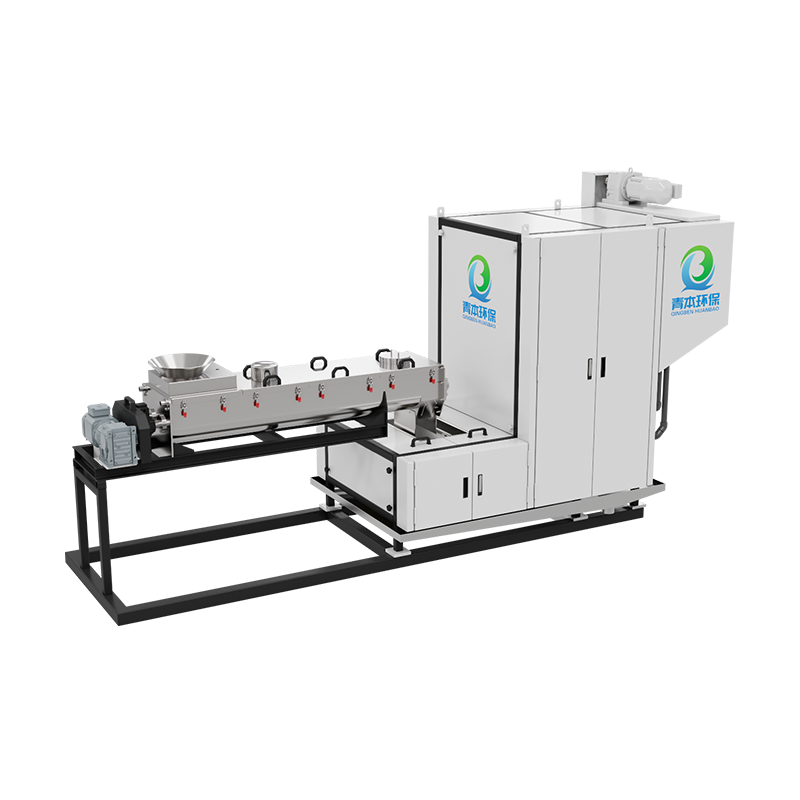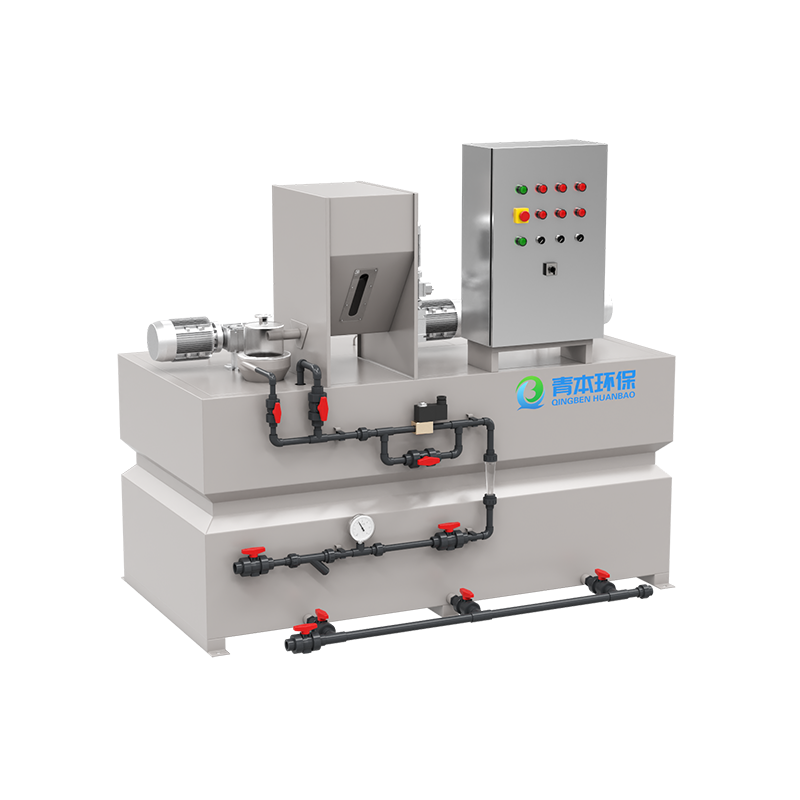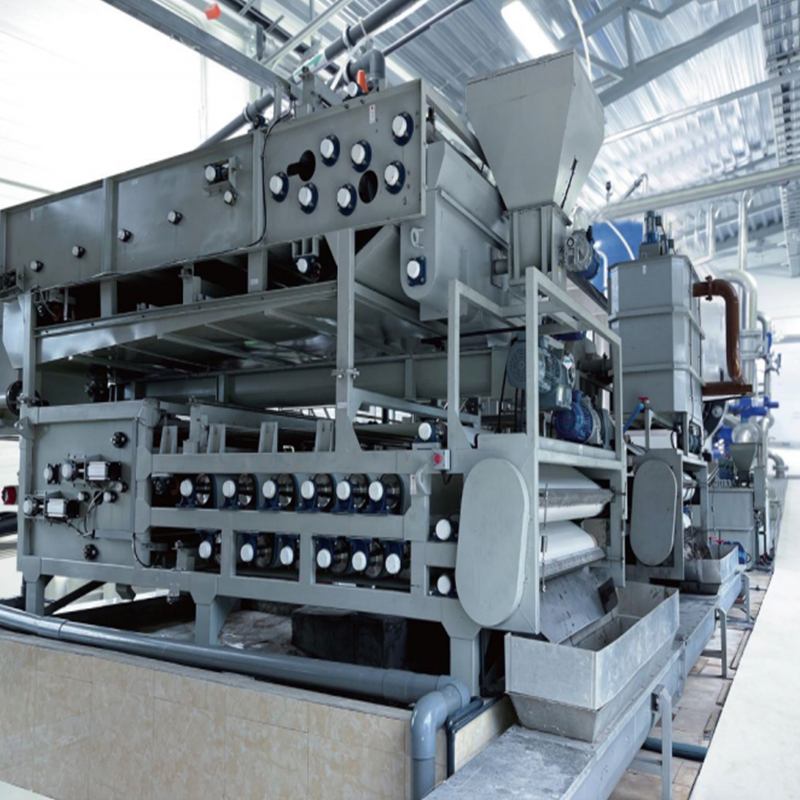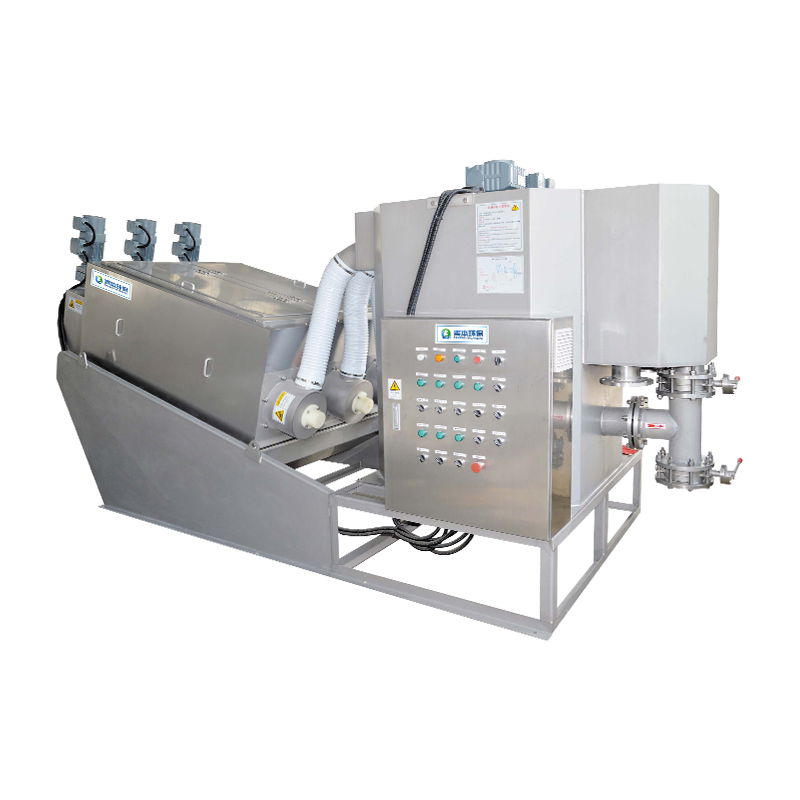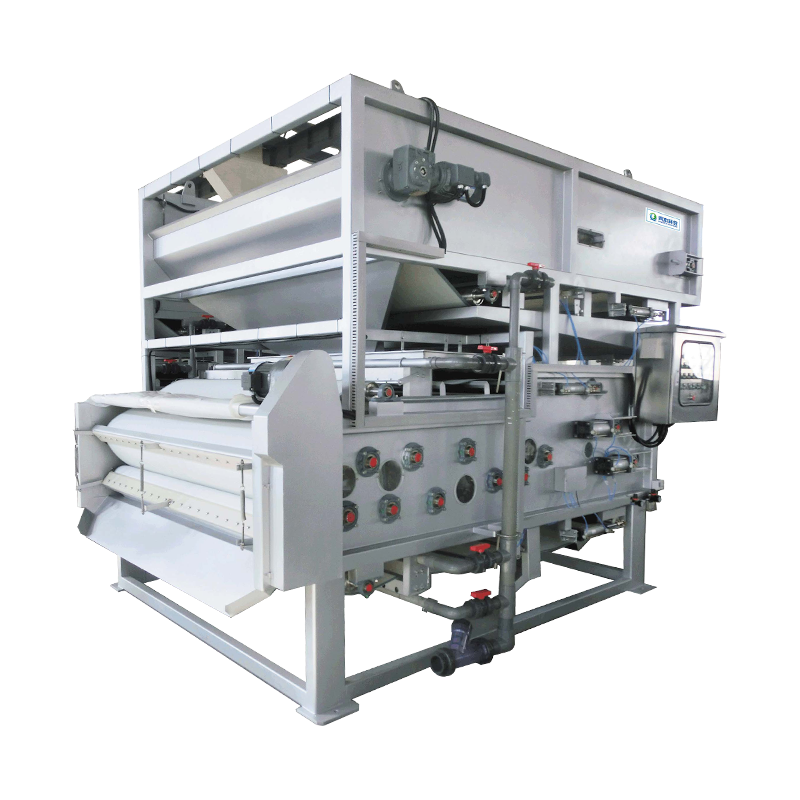A screw press sludge dewatering machine is a mechanical device used to dewater sludge in sewage treatment. It utilizes the principle of screw extrusion, with the rotation of the screw gradually compressing the sludge within the filter cartridge, thereby achieving solid-liquid separation. The core structure of this device consists of a laminated filter cartridge and a rotating screw. During operation, sludge is fed into the cartridge. As the screw rotates, the sludge is squeezed between the shrinking pitch and the gaps between the filter cartridges. Water is discharged through the gaps between the laminated plates, and the dehydrated dry sludge is discharged from the outlet. The rotation of the screw shaft drives the floating ring, and the movement between the fixed and floating rings continuously rotates to achieve continuous dewatering, cleverly avoiding the clogging problems common in traditional dewatering machines. The advantages of a screw press sludge dewatering machine lie in its continuous operation, low energy consumption, and relatively simple maintenance requirements. It is particularly suitable for sludge dewatering operations in municipal sewage treatment plants and industrial wastewater treatment. Compared to traditional belt or plate-and-frame filter presses, screw press dewatering machines are more compact, require less floor space, and offer a high degree of automation, adapting to diverse sludge treatment requirements.
Typical Applications of Screw Press Dewatering Machines
Municipal Wastewater Treatment Plants: Dewatering excess activated sludge to 80% moisture content before landfill or incineration
Food Processing Wastewater: Treatment of high-viscosity sludge containing organic matter (e.g., starch mills and slaughterhouses)
Petrochemical Industry: Deep dewatering of oily sludge (requires a demulsifier dosing system)
Emergency Treatment: Rapid sludge reduction after floods






